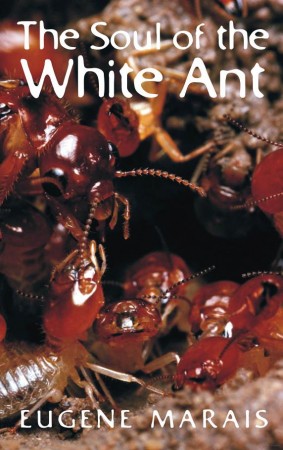The Soul of the White Ant

| Auteurs |
|
| Éditeurs |
|
| Parution | 01/01/1937 |
| Pages | 168 |
| Catégorie |
|
| Langue |
|
Présentation
"The Soul of the White Ant" by Eugne Marais is a passionate, insightful account into the world of termites. It is a meticulously researched expose of their complex, highly structured community life. Originally translated into English in 1937, the quality of research remains as relevant today as it was when it was first published. This illuminating account will not only appeal to those with a scientific interest in termites, but will similarly enthral readers who are new to their captivating world. An exceptional feature of his detailed research is the extraordinary psychological life of the termite. While the studies are based in South Africa, the extensive research includes the termites of Magnetic Island, Australia. You will be taken on an exciting journey into the amazing life of termites, as their astonishing world of hierarchy and roles within their community is revealed in captivating detail. His years of unceasing work on the veld led Eugne Marais to formulate his theory that the termite nest is similar in every respect to the organism of an animal. He observed that the workers and soldiers resemble red and white blood cells, while the fungus gardens are the digestive organ. The queen functions as the brain, controlling the collective mind, and the sexual flight of the kings and queens is similar in every aspect to the escape of spermatozoa and ova. This is a new edition of this title. The text has been extensively re-edited for today's reader.
Eugène Marais was born in a farming community near Pretoria in 1872. Journalism was his first career, but he later studied law in London, and by 1910 was in Johannesburg trying to establish himself as an advocate. Increasing depression drove him to retreat to Waterberg, a mountain fastness in northern Transvaal. Settling near a large group of chacma baboons, he became the first man to conduct a prolonged study of primates in the wild. It was this period that produced My Friends the Baboons and provided the major inspiration for The Soul of the Ape. He returned to Pretoria to practise law, to resume his career as a journalist, to continue his animal studies and to write poetry in Afrikaans. In 1926, the year after he had published a definitive article on his original research and conclusions about the white ant, a world-famous European author took half Marais's life-work and published it as his own. This plagiarizing may well have been a major factor in Marais's final collapse. Plagued for many years by ill-health and an addiction to morphine, he took his own life in March 1936.
First published in Afrikaans under the title "Die Siel van die Mier".
Sommaire
- 7Original publisher's note
- 8Original translator's preface
- 10Eugene Marais - a biographical note
- 171 The Beginning of a Termitary
- 242 Unsolved Secrets
- 293 Language in the Insect World
- 374 What is the Psyche?
- 525 Luminosity in the Animal Kingdom
- 566 The Composite Animal
- 687 Somatic Death
- 758 The Development of the Composite Animal
- 809 The Birth of the Termite Community
- 9610 Pain and Travail in Nature
- 10611 Uninherited Instincts
- 11612 The Mysterious Power which Governs
- 13113 The Water Supply
- 14014 The First Architects
- 15015 The Queen in her Cell
- 13 lectures
Bibliothèque
